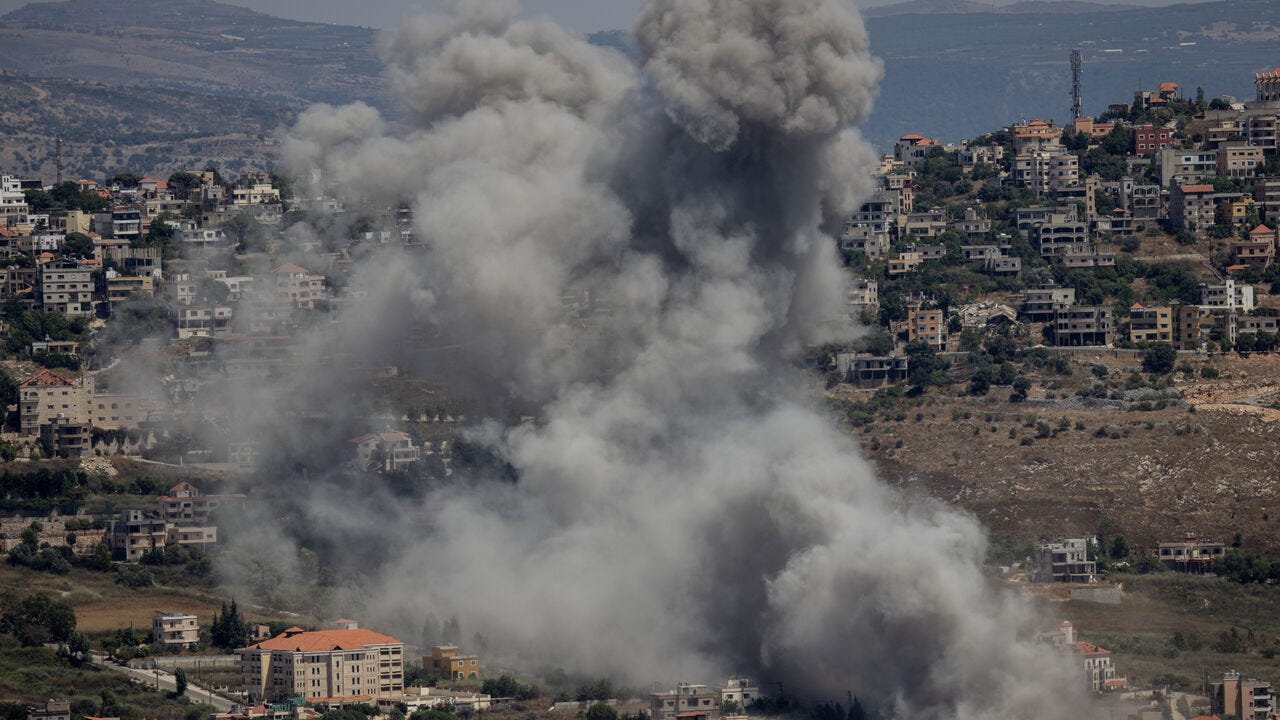Ceasefire in Lebanon - and Gaza?
Victory in Lebanon gives a chance for an end to the war in Gaza
The last week has seen two major developments on different fronts in Israel’s seven-front war against Iran and Iranian-backed militia groups. Let us first deal with the simpler of the two enemies: the Iranian Islamic Revolutionary Guard Corps proxy, Hezbollah in Lebanon.

So far, the war has seen 60,000 Israelis displaced, over 17,500 rockets and drones launched at Israel, over 13,000 Hezbollah targets struck by Israel, over 2,100 Hezbollah operatives killed and over 14,500 wounded, with over 80% of Hezbollah’s 130,000-150,000 missiles and rocket stores destroyed. The IDF have cleared along the immediate border with Lebanon to destroy Hezbollah fighting locations and terror tunnels, which were found stocked with uniforms and weaponry to launch 7 October-style terror attacks into Israel itself.
Whilst the IDF retains the capability to launch from the border areas into deeper in Lebanon (south of the Litani River, the border line demarcated by UN Security Council Resolution 1701), we have also seen the partial demobilisation of some reserves. This suggests that the IDF is sticking to its limited mission in the North and there are no plans to either hold ground permanently or advance deep into Lebanon, as some feared. Targets between the border and the Litani river are being attacked, as shown by the map below. By air and ground, the IDF is keeping the pressure on.
Make no mistake: whilst Hezbollah have received catastrophic damage to their leadership and their strategic capability, they are still a very real threat. Hundreds of rockets have been fired at Israel in the last few days. They have not made a toe-to-toe fight of ground operations in the South, abandoning pre-prepared positions and surrendering years of work, but their stay-behind ambush teams have inflicted painful casualties on the IDF. Approximately 180 Israeli soldiers and civilians have been killed. The Lebanon campaign in general, however, has been what can only be described as a monstrous three-month ass kicking for Hezbollah. Reports from inside Lebanon give a sense for the scale of damage to Hezbollah capability and morale inflicted by the IDF.
IDF operations will not destroy Hezbollah completely; they are too entrenched, too well supplied, too spread throughout the entirety of Lebanese society. However, with military and command losses of this scale it will take them years to recover, if they ever do. The time is right for a ceasefire for both sides, but the larger question is—how does Israel ensure any ceasefire deal prevents that recovery?
The details of the plan available publicly are along the lines of 1701, which immediately raises some questions. If 1701 failed so dramatically, what is to stop this deal going the same way? The gist of the proposal is for Hezbollah to withdraw north of the Litani River, taking them out of direct fire range of most Israeli towns and villages, and for them to stay out of range—permanently.
There is a proposed 60-day period where the IDF will retain a presence in the border villages and finish their mission to dismantle Hezbollah’s terror infrastructure, then withdraw. The Lebanese Armed Forces (LAF) will then take over security responsibility for the area between the Litani River and the Israel-Lebanon border.




